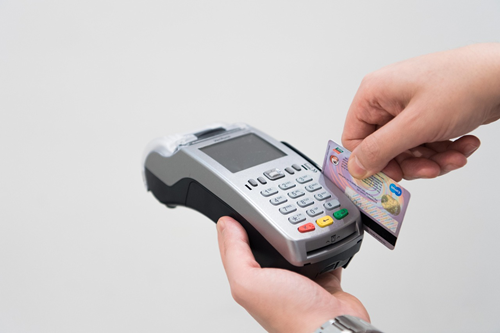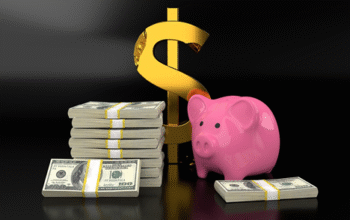Credit Card Debt in 3 Acts: How to Escape the Cycle Before It Starts
Credit card debt is often described as a financial trap, a silent monster lurking in your wallet. But what if you could see it as a story unfolding in three clear acts — from the initial temptation to the gripping crisis, and finally to the triumphant escape? Understanding this narrative can help you spot the warning signs early and avoid the spiral altogether.
Let’s break down credit card debt in three acts — and explore practical ways to rewrite your financial story before it takes a dark turn.
Act 1: The Tempting Invitation — When Credit Feels Like Freedom
Imagine this: You open your mailbox and find a shiny new credit card offer. It promises rewards, cashback, and the freedom to buy now and pay later. Suddenly, it feels like you have a magic card that turns your desires into reality instantly.
You’re thrilled — a new smartphone, a weekend getaway, or even just groceries on a tight budget. It feels like credit cards are your financial fairy godmother.
The Allure of Credit Cards
Credit cards are designed to feel empowering. They offer a promise of instant gratification with little immediate cost. That first swipe or online purchase seems harmless — a simple convenience. But behind that ease lies the subtle power of deferred payment.
Research shows that consumers often underestimate how much they spend on credit. Because it’s not physical cash leaving your hands, the pain of payment feels delayed, so people tend to spend more than they realize. This “pain of paying” disconnect is the seed of future trouble.
The Danger of Minimum Payments
Another sneaky trap in Act 1 is the minimum payment option. When your statement arrives, it tempts you with a low minimum — sometimes just 2% or 3% of your balance. It feels manageable, so you pay the minimum, thinking you’re on track.
But minimum payments mostly cover interest and barely chip away at the principal debt. This can turn a modest balance into a multi-year financial burden.
Act 2: The Spiral — When Debt Starts to Control You
If Act 1 was about freedom, Act 2 is the tightening of chains. This is when credit card debt begins to feel like a heavy weight around your neck.
You might start missing payments or paying only the minimum. Interest compounds, and your balance grows despite your efforts. Suddenly, the card that once felt like freedom feels like a ball and chain.
The Snowball of Interest
Credit card interest rates are notoriously high — often 15% to 25% APR or more. When balances linger, interest compounds daily, and the amount you owe balloons quickly.
For example, if you owe $5,000 with a 20% interest rate and pay only minimums, it could take over 10 years to pay off and cost thousands more in interest alone.
Psychological Toll and Financial Stress
The financial burden is bad enough, but the psychological effects make Act 2 even more dangerous. Credit card debt triggers stress, anxiety, and a feeling of helplessness.
Many people hide their debt, avoid opening statements, or ignore calls from creditors. This denial only makes the problem worse, pushing the debt deeper.
How Debt Limits Your Options
When a large portion of your income goes to servicing credit card debt, it limits your ability to save, invest, or even cover emergencies. It can affect your credit score, making future borrowing costlier or impossible.
The freedom you once felt is now replaced by financial paralysis.
Act 3: The Escape — Reclaiming Control and Freedom
Here’s the good news: Act 3 is where you take back control. Every story has a turning point — a moment where the hero rises to the challenge. You can rewrite your credit card debt story and avoid a lifetime of financial struggle.
Step 1: Face the Truth — Know Your Debt Inside and Out
The first step to escape is confronting your debt head-on. Gather all your credit card statements and write down:
- Each balance
- Interest rates
- Minimum payments
- Due dates
Knowing exactly what you owe and to whom is essential to building a realistic plan.
Step 2: Create a Budget — Know Where Every Dollar Goes
Next, craft a detailed monthly budget that tracks income and all expenses. This will reveal how much extra you can allocate toward paying down debt.
Cut unnecessary spending temporarily. That daily latte or subscription you barely use? Those small expenses add up — redirect that money to debt repayment.
Step 3: Choose Your Repayment Strategy
There are two popular methods to pay off credit card debt faster:
- Debt Avalanche: Pay off the highest-interest card first while making minimum payments on others. This saves you the most interest.
- Debt Snowball: Pay off the smallest balance first for quick wins and motivation, then roll that payment into the next smallest.
Both work — choose the one that keeps you motivated.
Step 4: Negotiate Lower Interest Rates
Don’t be afraid to call your credit card company and ask for a lower interest rate. If you have a history of on-time payments, many issuers will reduce your rate to keep your business.
Lower interest means more of your payment goes toward the principal — speeding up your escape.
Step 5: Consider Balance Transfers or Consolidation
If your credit is good, transferring your balance to a card with 0% introductory APR or consolidating debt into a lower-interest personal loan can help reduce interest and simplify payments.
Be careful to understand fees and terms so you don’t get caught with surprise costs.
Step 6: Build an Emergency Fund
Many people fall into credit card debt because unexpected expenses catch them off guard. Even a small emergency fund — $500 to $1,000 — can prevent new debt from forming during life’s surprises.
Step 7: Seek Support and Accountability
Debt can feel isolating. Consider talking to a trusted friend or family member about your goals. Join online communities or consult nonprofit credit counselors for expert advice and moral support.
Bonus: How to Prevent the Cycle Before It Starts
What if you could avoid this story altogether? Here are some key ways to keep credit card debt at bay from the start:
- Use Credit Cards as Tools, Not Income: Only charge what you can pay in full each month. Think of the card as a convenience, not extra money.
- Automate Payments: Set up auto-pay to cover the full balance or at least more than the minimum, avoiding late fees and interest build-up.
- Track Your Spending in Real Time: Use budgeting apps or alerts to stay aware of your purchases.
- Limit the Number of Cards: The fewer cards you have, the less temptation and complexity.
- Know Your Triggers: If you tend to overspend when stressed or bored, find non-spending ways to cope like exercise or hobbies.
Final Thoughts: Be the Author of Your Financial Story
Credit card debt is a common challenge, but it doesn’t have to define you. By recognizing the stages of the debt cycle and taking proactive steps, you can avoid falling into the trap or break free if you’re already caught.
Remember, every hero faces obstacles — what matters is how you respond. Will you let credit card debt write your story? Or will you take the pen and author your own financial freedom?
The choice is yours. Start writing a new chapter today.


